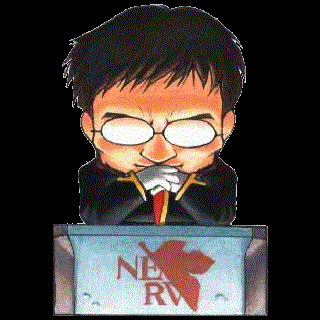How do you guys get software that is not in your distribution’s repositories?
I’m currently on a atomic distro, so how I get my software from favorite to least favorite is this:
- Flatpak
- Appimage
- Fedora distrobox
- rpm-ostree
os-tree is slow as molasses
As it should be, don’t do that.
Doctor, when I do this it hurts…
Also, you’re creating a disk image…
It is. I also wonder if there was a model that accomplishes the same thing but with less image copying.
Like, make snapshots every day, but manual installs are not snapshotted but still tracked with ostree. So you can revert them, display them transparently etc.
Have you met nix?
Nix is cool but also incredibly painful
I use nix package manager on fedora silverblue. It’s awesome.
Awesomely painful
Why is it painful for you?
It just is overly complex. Nix has its own environment instead of just being a regular package manager.
finally, somebody in this thread who doesn’t live in the past.
System package manager is for system binaries. Not for applications.
If I could, I’d compile all my software from source. Unfortunately, it seems a lot of open source developers don’t like writing software in C, which means the burden of sorting through dependancy-hell has been deferred to my shoulders instead.
In that case install Gentoo. Compiling everything from source is its thing. And on the way it will resolve all the dependencies for you. The dependencies you want.
deb
Native repos > AUR > compile from source > Flatpak
Mine is
AppImage > Native repos > AUR > Manually compiling from source > Finding an alternative
I don’t like installing software that doesn’t need to be installed, thus I like AppImage. Pretty portable. That also applies to compiling from source. Yes, my home directory is a mess.
curl
|sudo bash
I don’t remember what program it was, the dev explained it wasn’t available as flatpak because flatpaks are unsafe or something. Then the installation guide went “well anyway here’s curl | sudo bash.” Like, lmao. Talk about bad security practices.
very smart much secure
But it gets the job done, chaotic good
Wow a reference to those Mac Vs PC ads from like 15 years ago
I am fairly certain the original version of this meme has red shirt saying Linux and getting beat up
They stopped that ad campaign about 15 years ago, and they started it closer to 20 years ago.
AUR or flatpak.
Honestly the longer I spend daily driving Linux the more I enjoy using flatpaks…
No one uses app image anymore
this is probably an edge case but I do when i visit family and friends. these trips are short and infrequent enough that a laptop would be an unnecessary expense and i’m not driving through mountainous areas with my tower. none of them use linux. most have aged windows or mac machines. they don’t care if i run a live system or puppy linux from a USB drive. i add a handful of appimages i’ll use at night or if there’s free time. I’m sure there are better ways but it works for me.
If it works for you then it works, no need to switch it up. I guess one other way of doing it would be a persistent install on that USB.
Build from source
for transcripts, i built tesseract from source
LFS Ftw!
I have a few source built packages that I use every day.
Loading up my system with several development libraries to compile a program is preferable to taking a giant dump on my system in the form of soypacks.
There is no software that is not in AUR. I use arch, BTW.
Rpg paper maker
Though the Linux version is now in a “do not use” state. The developer decided to just make it into a web app because it was only working on Ubuntu
But yeah, sometimes I just compile from source, if needed.
That’s exactly what the vast majority of AUR packages do already? You can also apply modifications to the compilation process if needed.
Indeed, but don’t underestimate my laziness.
i use arch based btw (I love my Manjaro and it’s AUR support) :>
My software, QuickDAV, is not in the AUR. It’s open source, and I release it only as an AppImage, because I am lazy.
There’s so much random, useful software distributed only as appimages. But not notable enough for packaging fanboys.
I guess we should have added the word “notable”
I’m terribly sorry, you left the door wide open ;)
I’m curious, what makes AppImage a good choice for the lazy developer? Is it easier to create?
I’m curious, what makes AppImage a good choice for the lazy developer? Is it easier to create?
The appimage is basically just
git clone->make->make install DESTDIR=/path/to/AppDir->wget appimagecreationtooland finallyappimagecreationtool /path/to/AppDirand that’s it you have your appimage.appimagecreationtool being several tools that can create the appimage from an AppDir, like linuxdeploy, linuxdeploqt, go-appimage, etc
And that on itself isn’t complex either, it if basically running ldd on the binary, then copy those libraries into the AppDir and finally run patchelf to patch the paths in the binaries and libraries, suyu uses a deploy script instead of using those tools, which I’ve recently forked and began expanding.
I don’t know how easy it is to make a flatpak or snap, but I do know the dev of zen browser hates dealing with the flatpak and iirc right now the flatpak is outdated as result.
EDIT: Also lite-xl has been making a flatpak for like 2 years and it isn’t ready yet.
Ouch. xD
It’s super easy to create. And you distribute it on your own, so it’s basically like an installer exe on Windows. In my mind it’s one step above only offering source code.
Gatekeeping the word “software” here?
Here’s something not in the AUR. Tested on archClearly we need an Arch version of rule 34 and rule 35
Rule 34a: If linux software exists, it’s in the AUR. No exceptions.
Rule 35a: If linux software is not in the AUR, it will be made available in the AUR.
I don’t intend on pushing that one to the AUR. It’s not worth it.
Maybe I’ll make an AppImage at most.Sorry, I’ve already posted the new internet rules and they took immediate effect, I’ll have to report this incident to…the council.
Someone will put the AppImage in AUR
This is such a weird gatekeeper take
Its a joke lol, why are you so serious all the time
Compile from source.
Every February, I emerge qtwebengine to keep us warm.
I understand appimages. I use them exclusively. Can someone explain what flatpak and SNAP are and how they work? I have autism so please be as clear and concise as possible?
The easiest way to think of it is flatpaks are AppImages with a repository and snaps are flatpaks but bad.
That has benefits and detriments. Appimages contain everything they need to run, flatpak’s mostly do, but can also use runtimes that are shared between flatpaks.
All flatpaks are sandboxed, which tends to make them more secure. AppImages can be sandboxed, but many aren’t.
Flatpaks tend to integrate with the host system better, you can (kinda) theme them, their updates are handled via the flatpak repo, and they register apps with the system.
AppImages are infinitely more portable. Everything’s in one file, so you can pretty much just copy that to any system and you have the app.
That was a fantastic explination, but you forgot to explain SNAP. Oh snap, you forgot SNAP. Intrusive though won. So what is SNAP, how does it work, and why is it bad?
Yeah, sorry couldn’t resist.
snaps are very similar to flatpaks and, honestly, is technically better in a lot of ways.
Snap can be used for basically an entire system, while flatpak is limited to graphical apps. (Ubuntu core is built basically entirely off snaps.)
Snap is controlled by canonical, and the backend for the snap repo is entirely closed source. I’ve heard snaps are also easier for developers to work with, but I haven’t experienced that side of them.
Snaps automatically update by default where flatpaks don’t.
Snaps also get treated as loopback devices when they’re installed, which bloats a lot of utilities. (And they keep a few old versions around which makes it even worse). For example, you could run
lsblkand if you’re using snaps like 90% of it will be snaps you’ve installed instead of actual devices.Flatpaks are also noticeably faster to start up, which for desktop apps matters, but wouldn’t really matter for a server that’s aiming for a lot of uptime.
The loopback device issue is the main reason I don’t use snaps. I also like flatpak being completely open, but realistically that doesn’t matter for much. There used to be an open snap store, but that shut down because nobody used it.
I tried to install Ubuntu and it kept uninstalling Command Center every reboot. Not a fan of SNAPs. Or Canonical. But thanks for the explination.
Appimages are crap too, but at least there is progress with AppMan, repos and that sandboxing solution.
Snaps are only sandboxed with Apparmor and snapd only allows a single repo (which contained malware multiple times) so get the hell off my lawn XD
Just use flatpak. It runs and installs local but still has the benefits of a package manager
Yup.
Install from source if there isn’t a repo for the software.
Hardcore
Way back in the before times there was only the source.

OCI
What is that?
They probably mean Open Container Initiative (OCI), the protocol shared by Podman and Docker.
ty

















